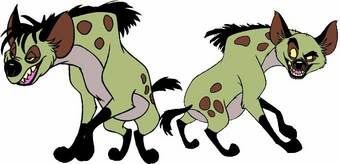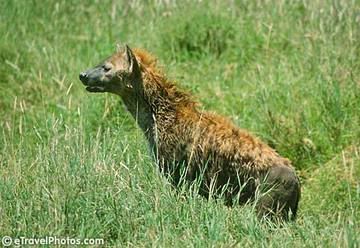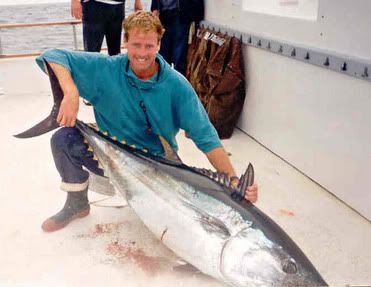
Last Sunday, sick and frustrated, I watched the deciding game of the May "Subway Series" on television. Some weeks earlier, a friend had offered me a ticket to the game and I had eagerly anticipated the afternoon ever since. But instead of animatedly talking baseball on a beautiful Sunday at Shea Stadium, I was feverish and pouting on my bedroom floor in a sweat-drenched t-shirt and boxer shorts. That the afternoon had turned rainy and cold, thereby making things less than ideal for those fans who were able to make the game, did little to make me feel better; I'd been betrayed by my immune system. Even the run of unfortunate errors by the young Mets' players, and the resulting Yankees rally (which whipped me into a frenxy of anguish despite my fugue-like state) could not quell my frustration at having not been able to be there.
Fortune sometimes smiles on all of us, though, and another friend offered me a ticket to a Wednesday night Yankees/Tigers game in the Bronx. So yesterday, in now familiar cold and rainy New York weather, I headed up to the Bronx after work. Despite having lived in New York City for nearly six years, this would be my first game in Yankee Stadium! The seats were the best I have had since attending a Baltimore Orioles/Cleveland Indians game at Camden Yards in the early 1990s. Directly behind home plate, just this side of the "gated" boxes, I found my spot moments after the first out of the game. I love baseball stadiums almost as much as I love the game, and I spent the better part of the first inning studying the stadium itself. By the end of the third inning, though, it was neither the game nor the stadium that demanded the bulk of my attention, but the fans. One pair, sitting four rows behind my left shoulder, was especially difficult to ignore. Early in the evening, during a relatively quiet moment in the stands, one of them yelled out, very loudly, "F*ck you, Detroit! You f*ckin' suck, you pieces of sh*t!" Unfortunately, this was only a warm-up.
I've been to a number of baseball games in the last decade - though only a small number of cities: Baltimore, MD; Philadelphia, PA; New York, NY - but I have never before heard such hateful taunting. Granted, I have a chip on my shoulder. I don't hate the Yankees, as a team, but I do loathe most Yankees fans. They represent the worst kind of spoiled royalty. As I see it, the fans who support the richest and winningest team in all of American sport should be proud and charitable. To point fingers and scream "You suck" at the rest of the field is akin to a member of the aristocracy leaning out of his carriage to call a toiling peasant a loser. But my desire for the average Yankees fan to inherit some humility and grace is not the matter at hand.
While watching that Sunday "Subway Series" television broadcast, I could hear New York Mets fans boo Kaz Matsui, the struggling Japanese import, when he approached home plate to bat up. Each time I heard these jeers, I shook my head; after all, the Mets are one of my favorite teams (second only to the Chicago Cubs) and the heckling that Matsui was dealt incensed me. The commentators noticed the booing, too, and mentioned how difficult such treatment had proven for Matsui. In the Japanese equivalent of our major league (Puro Yakyu), fans never heckle their own players. In fact, they don't boo or berate players on opposing teams either! Kaz Matsui (not to be confused with the more successful Hideki Matsui, currently playing across town for the New York Yankees) emerged a superstar from a league in which players receive only support. Today, he finds himself centerstage in a much tougher arena, one in which fan regard is fickle and their bite is often terrible.
The friend who had given me the ticket is married to a Japanese man and I decided to ask him, as we quietly sat among the ruckus at Yankees Stadium, what he made of Major League Baseball. While he isn't a big baseball fan, he immediately commented on the difference in the stadium experience. In Japan, he explained, each player has a song or a dance associated with them and Puro Yakyu stadiums are filled with fans ritualistically celebrating their team, even when they lose. The whole experience, he said, "is about having fun."
When the Yankees next scored on a two RBI double by Jorge Posada, the fans in our area went crazy. The first few seconds were fun, with lots of high fives and wild cheering, but then the chorus of, "F*ck you, Detroit!" and "Who's your Daddy?" began anew. A crippled man seated in front of me grabbed at his wrist crutches and struggled to his feet. He attempted an awkward high five with a buddy of his who was screaming something to the effect of, "We own you, Detroit!" Perhaps wrongly giving him the benefit of the doubt, I imagined that this crippled fellow, a casualty of genetics or circumstance, couldn't move quickly enough to ditch his sh*thead friends. I suppose he, too, could have been slandering the mothers of the Detroit Tigers, but I couldn't hear his more quiet ejaculations over the rest of the din. The crowd "celebration" was a curious mix of happy excitement, vitriolic fervor, and entitlement. I turned back to Koh and said with a smile, "Just like Japan, huh?" He shrugged and shook his head, half laughing. He appeared bemused. We sat in our seats among the standing, screaming Yankee fans and tried to take it all in.
By the time that exchange took place, the Yankee duo sitting behind us had elected to up the ante. Below are just a few of the many things screamed over my shoulder. Some of these were repeated many times.
"F*ck you, you f*ckin' f*ggots!"
"Hit the mother f*cker in the face with the pitch....Yeah, hurt 'em!"
"You fat piece of sh*t, there's a cheeseburger on second...can you make it, fatboy?"
"Detroit sucks! Boston sucks, too! F*ggots live in Boston!"
"Let's Go Jankees! Yeah....Jankees!"
"You suck, Detroit! Why bother trying?"
Occasionally, these fans even opted for a little abuse of their own boys.
"Hey, Giambi, you f*ckin' juice head! You're a potato head, you sh*t!"
"Hey, Matsui, hit the ball to China or wherever you come from!"
"Hey, Posada, if you had good knees you could run better! Shoulda been on second with that hit, you putz!"
In between such outbursts, the pair talked about beer, cell phones, and their pursuit of women. On beer, for example, one announced, "I don't drink Heineken...it's just too dark and thick, ya know?" Heineken is way too dark and thick? Um...okay.
Anyway, while these two "characters" were certainly the loudest around, they were not alone. Cries of "Detroit sucks!" could be heard anywhere you moved and every time a Yankee player failed to make a play or get a hit, no matter how difficult, the fans voiced their displeasure. Most distressing of all, though, was the encouragement given the loudest idiots in the stadium. Even those folks who seemed more inclined to clap and cheer than berate and boo egged on Tweedledum and Tweedledee. A girl noticed me staring over my shoulder at the pair of jackasses and she laughed. "They're awesome, aren't they?," she asked, with a smile. No, they're reprehensible and offensive, in fact. Shamefully, I said nothing.
I don't want to give the impression that I never cheer on my teams - I've jumped up and down at games and screamed obscenities at the television more than once - and I can't claim to be above booing a bad call. (A clear bad call is legitimately angering, but I won't boo close ones, even if disappointed in the result; after all, I'd hate to make a judgment mistake on the field, and I trust that the referees and umpires want to do as good a job as they can.) Yet I have absolutely no urge to call anyone on the other team a "piece of sh*t," even if I dislike them. What little I know of Alex Rodriguez, for example, makes me disinclined to like him, but I've never booed him (though I have wished for a strike-out or a botched bit of fielding). Shaquille O'Neal drives me mad with his dominating play and arrogant attitude, but I don't hope for a broken knee or a torn ACL.
The point is, I'm distressed by the prevalence of negativity in American sports. I'd like to think that it hasn't always been this way, but the truth is I'm not so sure. The nostalgia one feels for "the good ol' days" is largely a result of edited history; Ken Burns need only add a sepia tint and a banjo track to his "Baseball" footage and everything seems that much better. Even Barry Levinson's "The Natural," considered by many to be the pinnacle of "sports movies," hints at the venomous sting of the fan base. Is our culture really this willing to become the ignorant mob? If, as many folks say, contemporary athletes and celebrities are elevated to sainthood, their experience is equal parts transcendence and martyrdom. We love 'em, we hate 'em. We love to hate 'em, we hate to love 'em. It all seems a little schizophrenic to me. While I champion complexity, I guess I just prefer Southern hospitality and reserve at the ball park.
Making my way out of the stadium, a few drunken Yanks fans decided to make comments about my Cubs hat. Fortunately, they were not particularly nasty. "Look at this guy with the Cubs hat. What the f*ck is that about?," and "Hey, a Cubbies fan is here tonight, bro," weren't intended to insult. These drunks just wondered what I was "all about," and there's nothing wrong with that. Nevertheless, I left the stadium thinking highly of baseball, but none too highly of the species that showed so much promise back when games were first being invented, when we were discovering ways of channeling our competitive aggression into an afternoon of fun.
Photo credit: unknown source; image of Freddy, an old-timer who attends every Yankees home game and bangs on his pot with a spoon. On Wednesday night, his spoon and pot were so abused by some fans that he reclaimed them, then opted to hold them out of reach for a while.








